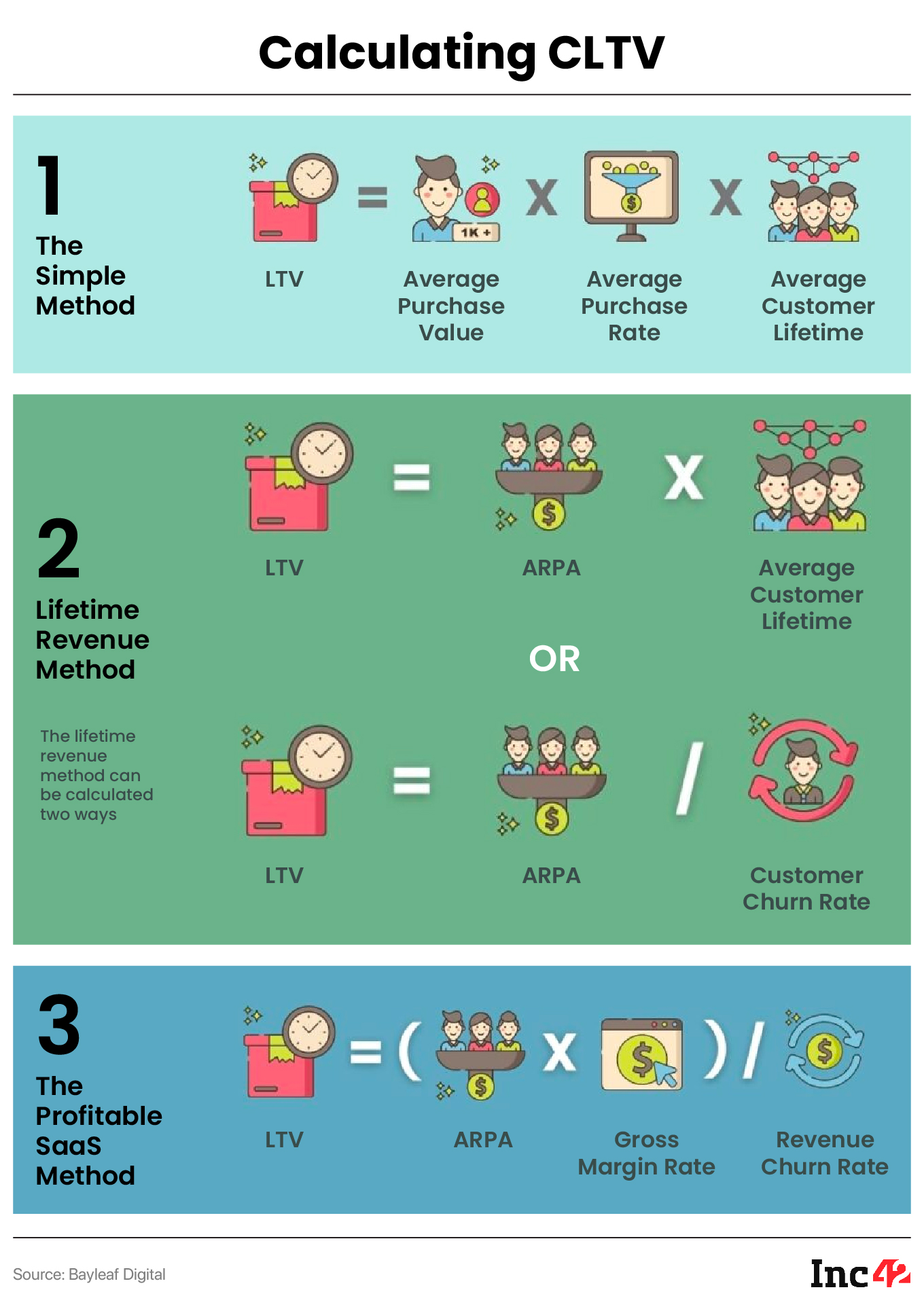Here’s Everything You Need To Know About Customer Lifetime Value

What Is Customer Lifetime Value?
Customer lifetime value (CLTV) means the total expected sales a single customer will generate throughout the business relationship with a company. CLTV is a pivotal metric for SaaS businesses, which use subscription models to handle frequent and repeat purchases.
CLTV allows SaaS companies to determine how much money a customer will likely spend on software services over time. Figuring out the long-term value of your customers will also help you optimise customer acquisition and retention strategies.
The Link Between Customer Lifetime Value & Customer Acquisition Cost
When a company wants to acquire new customers, it spends money on advertisements, salespeople and other promotional tools, thus incurring customer acquisition costs (CAC). The ratio between customer lifetime value and customer acquisition cost is crucial, as it helps SaaS companies determine the value of their investments – how much money a customer brings in versus the cost of turning a prospect into a buyer.
Dhruvil Sanghvi, founder and CEO of SaaS startup LogiNext, said that if a customer’s lifetime value (CLTV) is $9K and the CAC costs $3K, the ratio will be 3:1 ($9K/$3K). If the ratio is 3:1 or higher, the company is doing well because it gets more value from customers than the money it spends to acquire them. However, when the ratio is lower than 3:1, the company may have to rework its strategies to improve its business performance.
It means finding cost-effective and impactful ways of advertising to gain traction. The goal is to balance the costs of acquiring customers with the revenue they generate.
How To Calculate Customer Lifetime Value
In the SaaS context (or for any business), lifetime value (LTV) is the overall value generated by all customers. On the other hand, CLTV amounts to annual revenue per customer multiplied by the average customer lifespan. However, this static and broad calculation has its limitations.
Take, for instance, a new SaaS company that has been in the business for a month. Understandably, it cannot determine each customer’s lifetime value (CLTV) due to a lack of data. Although new SaaS players may not have access to accurate data because it is too early to gauge customer potential, they can use the three most common methods to calculate their subscribers’ value.
These three include the Simple Method, the Lifetime Revenue Method and the Profitable SaaS Method.
- Simple Formula: Lifetime Value = Average Purchase Value x Average Purchase Rate X Average Customer Lifetime
- Lifetime Revenue Method: This can be calculated in two ways
- LTV = Average Revenue Per Account x Average Customer Lifetime
- LTV = Average Revenue Per Account / Customer Churn Rate
- The Profitable SaaS Method: Lifetime Value = (Average Revenue Per Account x Gross Margin%) / Revenue Churn Rate

When calculating a user’s historical CLTV, a SaaS company measures what the user has spent the money on and for how long. In this way, companies can calculate the revenue generated by each user from the time they signed up. It provides a bird’s eye view of total customer value over the months and the years.
However, SaaS companies evaluating the historical data of subscribers do not have insights into customer behaviour or mindset. This is bound to hinder predictive analyses of CLTV based on customer retention.
Unlike the historical method, predictive CLTV uses AI/ML tools to consider customer trends, retention spans, or even customer success costs for identifying revenue potential (think of the land-and-expand business model where annual contract values are kept deliberately low for win-win growth).
Hurdles In Calculating Customer Lifetime Value
Sanghvi said that customer lifetime value (CLTV) and CAC cannot be calculated in the early years of a startup. He suggests that SaaS players refrain from calculating CLTV and CAC in the first year because subscriptions and cancellations happen too frequently in the initial stage. Businesses should figure it out only after three years, while enterprises should do it after 10 years.
Macroeconomic conditions such as pandemics, economic slowdowns and global unrest can also cause instability. Therefore, calculating CLTV becomes all the more challenging.
He further says that early stage businesses are still in the experimental stage. So, they should search for the best business models and introduce new verticals to ensure profitability.
How SaaS Companies Can Improve Customer Lifetime Value
- Upgrade products/services to meet changing requirements and drive sales. This can be done by bundling/tweaking features and pricing based on customer insights. It will also push upselling and cross-selling more cost-effectively than acquiring new customers.
- Educate customers on product benefits through training and tutorials. It will boost customer retention and foster extensive business ties.
- Customise UX and messages to add value and deepen loyalty. Even small touches help extend customer lifespans.
- Create tailored features to make products indispensable. Developing a custom dashboard that improves business efficiency and fosters product dependence can extend customer lifetime value.
- Prioritise exceptional customer support for satisfaction and retention. Maintain an active presence across all touchpoints by addressing concerns swiftly and providing product resources for a lasting customer relationship.
The post Here’s Everything You Need To Know About Customer Lifetime Value appeared first on Inc42 Media.
No comments